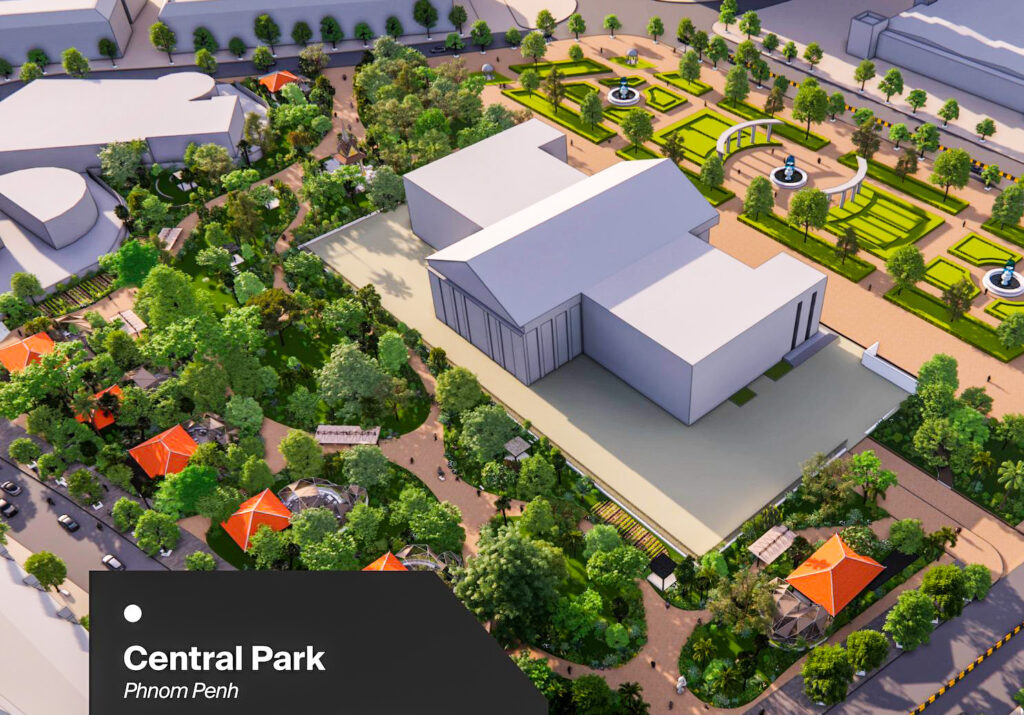The new Koh Pich Central Park will offer education as well as relaxation in the heart of Phnom Penh, where natural park lands are few and far between

Green spaces are few and far between in Phnom Penh. The city’s rapid development and the accompanying construction bonanza have left urban land too valuable not to be developed. While historically the cities of Europe and America resolved this issue by creating leisure parks owned and operated by the local government, such measures have been conspicuously absent in Cambodia.
One notable exception is the Koh Pich (Diamond Island) district. In contrast to Phnom Penh’s general disinterest in creating spaces where urban inhabitants can connect with nature, two parks – Coconut Park and Treelion Park – have already been developed on the island. And in the next few months, a new Central Park will begin to take shape around the Koh Pich City Hall.
The new space will supplement the original park in front of city hall, a shadeless space built 15 years ago to beautify the building’s surroundings. Built in the style of a French heritage garden, with neat symmetrical hedges demonstrating mastery over nature, that park remains largely devoid of visitors. The proposed park around the back of the hall is inspired by the 19th-century English tradition, an organic landscape bringing nature back into the city.
“Phnom Penh is a city with almost no nature yet,” said Dominique Desmet, managing director of WISE design at LBL International Construction. “So if you don’t have a car (or other transport), or if you don’t have financial capacity to travel, you don’t have access to nature.”
The new park aims to teach and offer a place to relax. The idea, said Desmet, is to have “an educational journey in the middle of the park,” where interpretive labels teach about the plants and trees, and children can plant vegetables in organic gardens to study the life cycle of plants. The park is also envisioned as a leisure hub for the local community as well as international visitors.
“Our vision was to really enable this location, which is the centre of Koh Pich, to be alive,” said Thierry Tea, VP at OCIC group, the company that developed Koh Pich.
To that end, flexible structures within the park will provide space for a rotating assemblage of shops, restaurants, cafes and artisan workshops. As visitors enter the park from the street, they will transition from city to nature, passing dining and retail outlets, and through organic pergolas inspired by the work of Xavier Veilhan, before entering the forest.
The space will be developed in phases, allowing the space to respond to the desires of Koh Pich residents and evolve with the neighbourhood over time. Work on the first phase will begin this month. The approach is seen in the style of a start-up, said Tea, with the strategy being to “launch it first, have people experience it and enjoy it, and then receive feedback.”
This park, as with the other two on the island, is just one part of a larger vision for Koh Pich. “We are now basically looking at sustainability and at the very long term,” said Tea. “We are investing for our children’s children, and their children.”



